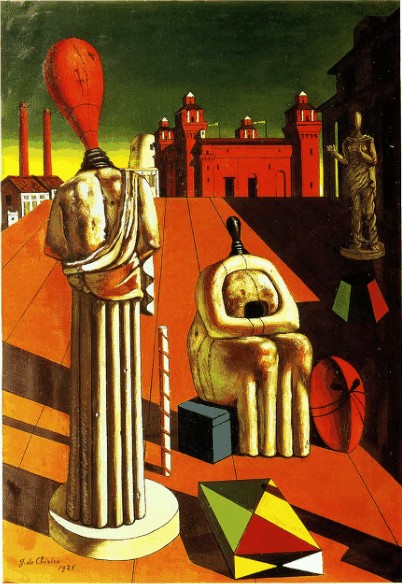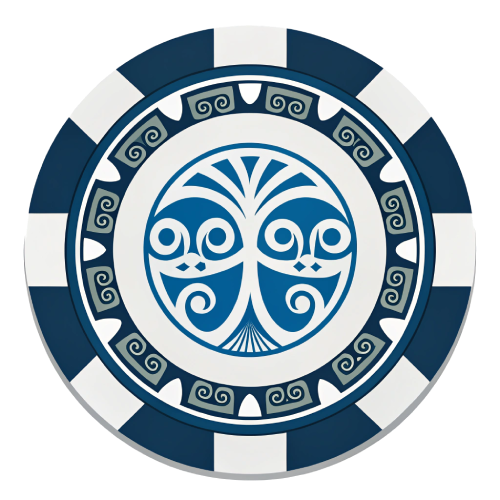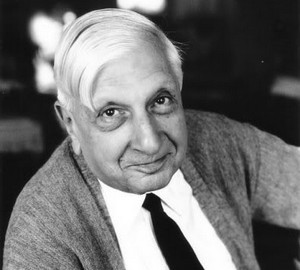
- Year of birth: July 10, 1888
- Date of death: November 20, 1978
- Country: Italy
- Locations of the artist’s works: Museum of Modern Art (New York)
Biography:
In Greece de Chirico receives a classical art education, in Munich he makes discoveries that help him develop his own style. De Chirico’s metaphysical painting has its origins in nineteenth-century German philosophy. At the beginning of the nineteenth century there is an unprecedented flowering of culture in Germany, and especially in Bavaria. Many new philosophical systems and aesthetic theories arise. Munich becomes the artistic center of Europe on a par with Paris. DE CHIRICO AND THE GERMAN PHILOSOPHY After his father’s death in 1905, de Chirico feels lonely and lost. The artist plunges himself into the study of world culture and mythology, trying to find answers to the questions that worry him. The first thing he decides to overcome the lack of mental balance and learn to think clearly. Through the study of the works of German philosophers – Arthur Schopenhauer (1788-1860), Friedrich Nietzsche (1844-1900) and Augo Weininger (1880-1903) – the young artist begins to form his own world view and his own plastic theory. At the beginning of the twentieth century, the philosopher and psychologist Weininger, author of the famous book Gender and Character, was particularly popular among Munich students. In his reasoning, Weininger uses the concepts of the artist-researcher and the artist-sacrificer (incidentally, he refers to the latter as Arnold Böcklin, whose work inspired de Chirico at the time). Weininger’s work helped the artist develop his own metaphysical theory. The German psychologist wrote, in particular, that the constantly changing surrounding reality contains obligatory so-called independent elements – geometric forms, constructions and symbols of objects. It is these independent elements that de Chirico adopts in his work. Since 1908, de Chirico begins to study the philosophical works of Friedrich Nietzsche. The ideas that he drew from them will also have a significant influence on his metaphysical painting. Following the example of the German philosopher, who focuses much of his discourse on the process of self-improvement, de Chirico turns to the poetry of transformation as a way to discover the powers of the observer. Arthur Schopenhauer, in turn, forces the artist to reflect on the processes that originate in the object world. De Chirico also speaks of an “atmosphere in the moral sense,” thus explaining his admiration for the works of Klinger and Böcklin. The ideas of all the aforementioned philosophers would be close to the artist throughout his life and would find an original reflection in his work. In July 1911 Giorgio de Chirico finds himself in Paris for the first time. He is only twenty-three and is mainly interested in contemporary avant-garde movements, especially Cubism with its analytical approach to the transmission of form. The leaders of the cubist revolution, Picasso and Braque, fascinated the young artist and pushed him to search for new formal solutions. De Chirico subsequently creates several canvases with an unconventional format, such as trapezoidal or triangular. In the first paintings by Fernand Léger (1881-1955), which appeared at the same time, de Chirico was attracted by “mechanized” depictions of people, which inspired him to create a whole series of paintings with mannequin figures. In Paris, de Chirico often visits the Louvre, where he is primarily acquainted with the art of antiquity. A lover of archaeology and antiquity, the artist looks to Greek, Roman and Middle Eastern sculpture for new impulses for the day of his metaphysical painting. While in Paris, de Chirico meets the Surrealist photographer Jean Eugène Atger (1856-1927), a master of depicting deserted Parisian streets, houses and squares. De Chirico’s works from this period have the same atmosphere of sadness and desolation as Atger’s photographs, which brings them closer together. However, as Guillaume Apollinaire testifies, de Chirico “very soon departs from the Parisian avant-garde to create his own art, where empty palaces, towers, symbolic objects and mannequins come together. All this is depicted in pure colors, overflowing with an impression of the artificiality of the real…” With his painting, which he calls “metaphysical,” de Chirico seeks to destroy logical explanations of reality. Applying a synthesis of various influences, the artist develops the foundations of metaphysical painting, which will never become a trend in the broad sense of the word. Not subordinate to any clearly formed doctrine, metaphysical painting would become the domain of a few artists – de Chirico himself, Carlo Kappa (1881-1966), Giorgio Morandi (1890-1964). Metaphysical painting is characterized by the poetry of stillness, stiffness, tension in the presentation of form and color, rigidity of line and sharpness of light and shade transitions. It relies on the absolute negation of reality presented to us by realism, emphasizing the depiction of selected objects and the deliberate emphasis on individual figurative elements. These provisions lead metaphysical artists to appeal to the harmony characteristic of the Italian Renaissance and the works of the great masters of the classics. In metaphysical painting, however, objects placed in a single space and subject to a single perspective never complement each other, they are not interconnected. The elements of these compositions are combined by means of purely formalistic techniques. De Chirico is the first artist who embarked on this path in 1910. Over the next few years, he would accumulate and systematize his inventions and findings. In 1917, when de Chirico’s figurative alphabet was already well established, another Italian artist, Carlo Kappa, seven years younger than de Chirico, began to follow the same path. In 1919 he publishes a collection of texts entitled Metaphysical Painting. Carr places in his book and de Chirico’s articles – “On Metaphysical Art” and “We Metaphysicians,” which were also published in the Roman magazines Cronache de’attuait’a and Valori plastici. According to Carr, metaphysical painting must reach a certain degree of authenticity in conveying reality in frozen and still images. This publication attracts the attention of the painter Giorgio Morandi, who soon joins de Chirico and Carr. The creative group thus formed lasted until 1920. The fact that the “metaphysicians” combine in their paintings elements of fantasy and a realistic representation of reality, attracts the Surrealists to their work. The atmosphere of “disquieting strangeness” reigning in the paintings of the “metaphysicians” is very close to the ideas of the Surrealists, who seek to “change life” by liberating the subconscious and erasing the boundaries between dream and reality. In the early 20s, de Chirico’s influence on the Surrealists, particularly on the painting of Max Ernst, was enormous.
DE CHIRICO AND GERMAN PHILOSOPHY
PARISIAN INFLUENCES
METAPHYSICAL PAINTING
Paintings by Giorgio de Chirico
The Archaeological Picture Cycle
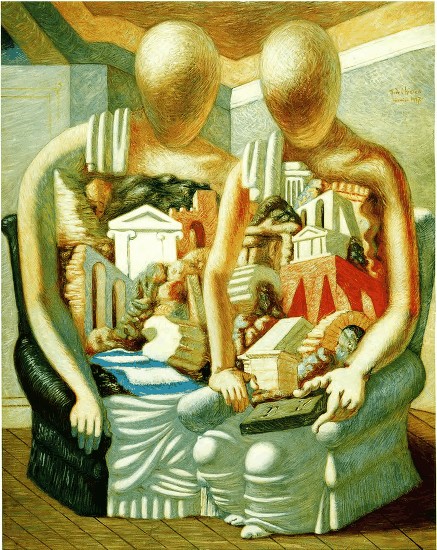
Prodigal Son
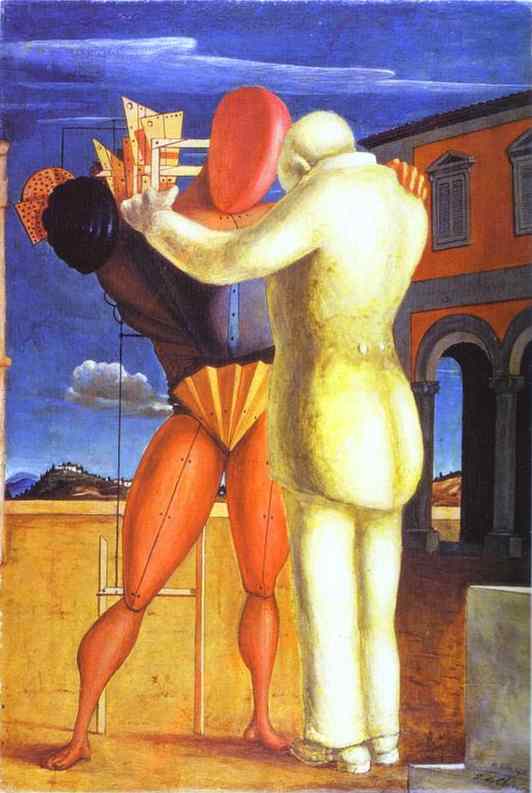
Purity Of Imagination
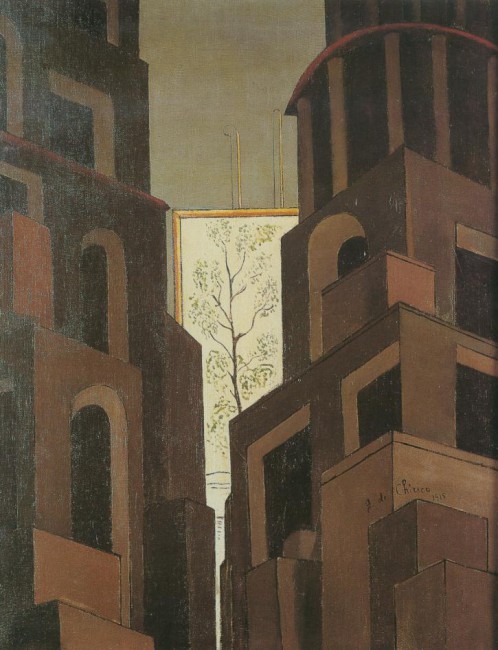
The Gladiator Cycle Of Paintings
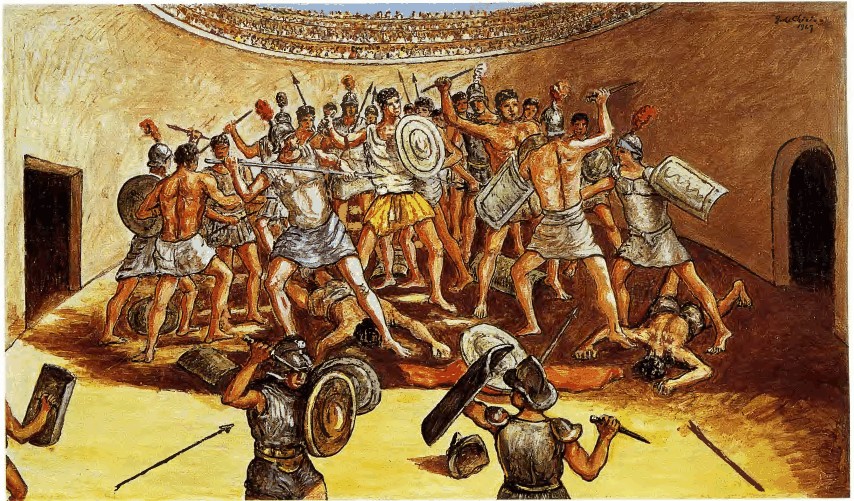
Melancholy And The Mystery Of The Street
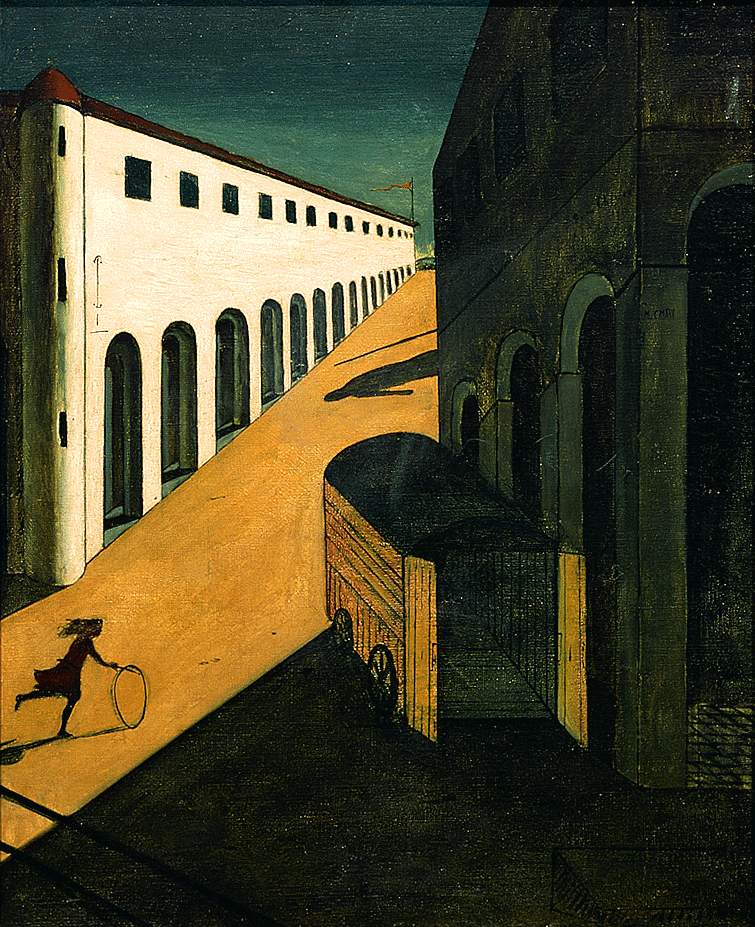
Metaphysical Interior
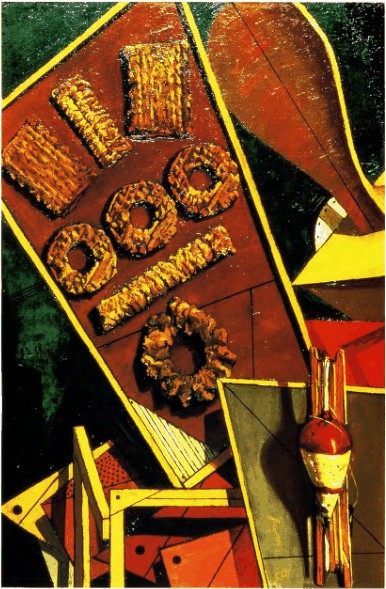
Metaphysical Interior With Cookies
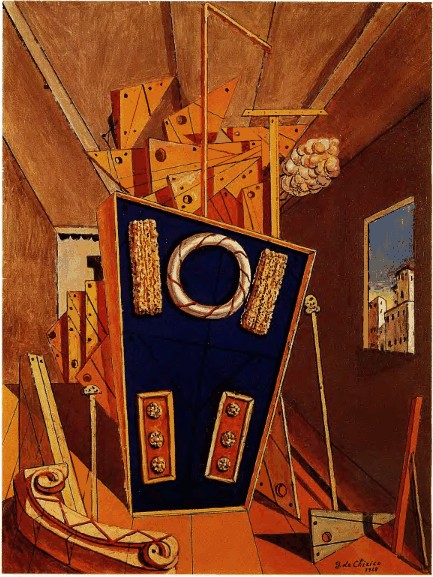
The Uncertainty Of The Poet

Destruction Of Muses
